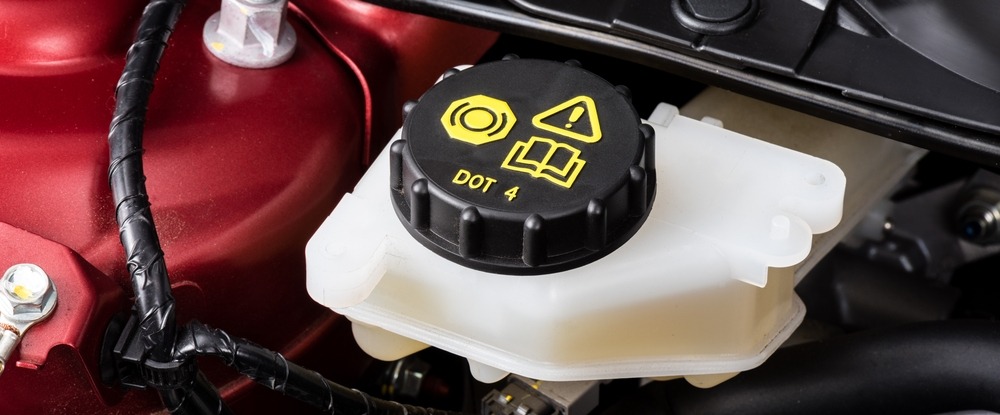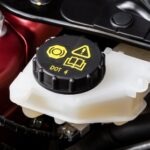- October 9, 2023
- Posted by: Wentworth
- Category: Brakes

 Brake fluid is a necessary part of your vehicle’s braking system. Unfortunately, it is often overlooked compared to other maintenance tasks. This fluid ensures the safe operation of your brakes, allowing you to stop your vehicle effectively. Let’s explore the role of brake fluid in the braking system and why a fluid flush and brake service maintenance is good for vehicle safety.
Brake fluid is a necessary part of your vehicle’s braking system. Unfortunately, it is often overlooked compared to other maintenance tasks. This fluid ensures the safe operation of your brakes, allowing you to stop your vehicle effectively. Let’s explore the role of brake fluid in the braking system and why a fluid flush and brake service maintenance is good for vehicle safety.
What is Brake Fluid?
Brake fluid is a non-compressible hydraulic fluid designed to withstand high temperatures. It has a high boiling point that prevents vaporization. The high heat generated during braking can cause this fluid to boil. If the fluid boils, it creates air bubbles in the brake lines, resulting in a loss of braking power.
How Does The Brake System Work?
Your vehicle’s braking system is a complex network of components designed to slow and stop a heavy, moving object. Older autos may use a drum brake system, while newer models use disc brakes and ABS. Basically, pressurized brake fluid moves through small tubes (or brake lines) from the brake pedal to the brake components. This force allows the calipers and wheel cylinders to engage and stop the vehicle’s motion.
Importance of Maintaining Brake Fluid
By prioritizing brake fluid maintenance, you can prevent potential damage and save yourself from unnecessary expenses. Regular maintenance of your brake fluid is of utmost importance for several reasons.
- Fluid Flush: The fluid is hygroscopic, absorbing water from the surrounding environment. Over time, this moisture can contaminate the fluid, causing corrosion within the braking system. It is important to regularly perform a fluid flush for your vehicle’s safety and performance.
- Subjected to high temperatures: Over time, these temperatures can cause the fluid to break down and lose effectiveness. This degradation can lead to decreased braking performance, longer stopping distances, and a greater risk of brake fade. Therefore, regular brake service maintenance ensures your vehicle’s safety.
- Neglected maintenance can result in costly repairs: As the fluid becomes contaminated, the lubricating qualities deteriorate. Increased wear can damage brake components, such as the master cylinder, calipers, or ABS system. Repairs or replacements of these parts are expensive and time-consuming.
3 Signs of Brake Fluid Deterioration
Spongy Brake Pedal = Low or Old Fluid
A spongy brake pedal is a common sign of deteriorating fluid. If your pedal feels less responsive or requires more effort to engage, air or moisture may be in the old fluid. If you experience decreased braking performance, schedule brake service maintenance with your local auto technician.
Dark Colored Brake Fluid = Contamination
Deteriorating brake fluid can change color as it ages. Fresh brake fluid can be clear, amber, blue, red, or green. However, the darker the color, the greater the contamination or degradation. If your fluid is very dark, murky, or feels gritty, schedule a fluid inspection or fluid flush.
Unusual Noises or Vibrations = Faulty Brake Lines
Unusual noises or vibrations when using the brakes could indicate faulty brake lines. A damaged line can cause leaks, resulting in sluggish braking or even brake system failure. Brake lines do not need to be replaced often but must be replaced at the first sign of cracking or wear.
Brake Service Maintenance in San Diego
The ASI-Certified Technicians at Wentworth Automotive are happy to discuss all your automotive braking system needs. Visit us online or call (858) 541-1044 to schedule your brake inspection, brake repair, or brake service maintenance.

